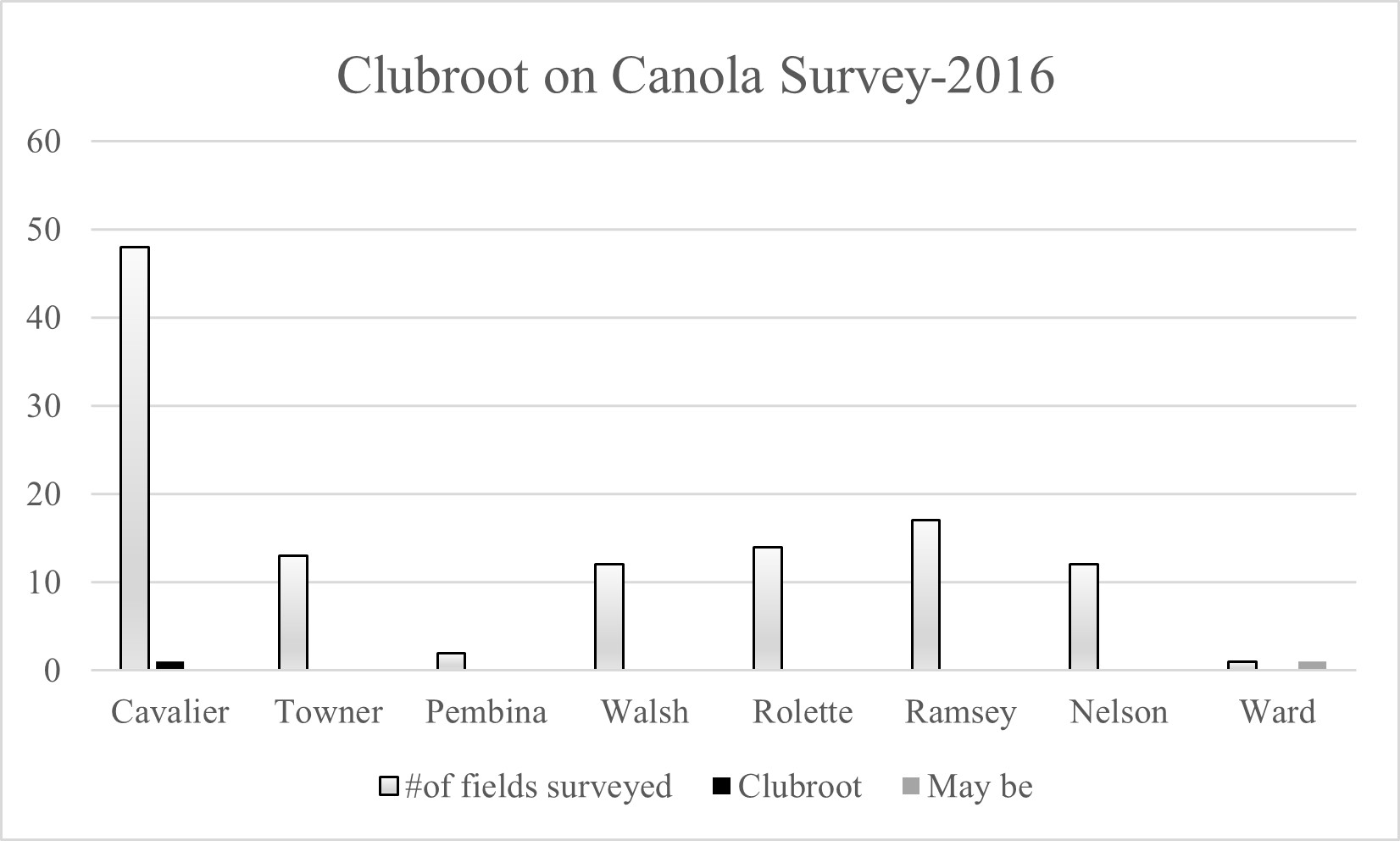Survey Procedure: Clubroot scouting was done visually by inspecting canola crop roots. The disease survey was conducted in seven northeastern counties of North Dakota. Counties selected were Pembina, Walsh, Nelson, Ramsey, Towner, Rolette and Cavalier. County selection was done on hypothesis of clubroot propagule movement in all directions through equipment, soil or water to neighboring counties of Cavalier. In each county, one field in every 2,500 acres was selected and scouted. GPS coordinates were gathered to identify the positive fields with intent to keep monitoring for future research. In all, a minimum of 15-20 fields per county were targeted for scouting. The survey was done in two phases.
1st phase:
In the growing season, stems were sampled from distinct patches of diseased or prematurely senescing plants in the field. Patches visible from the edge of the field were checked by digging out plants and observing the roots for symptoms of clubroot.
2nd phase:
After swathing:
The methodology of scouting at swathing was based on the methodology followed in Canada by the Alberta Agricultural and Rural Development (AARD) for clubroot disease survey. AARD indicated that the incidence of clubroot is more in the field entrances. The survey was done from the fields’ main entrances. From the main entrance in the field, the survey group walked along in a “W” pattern by stopping at 10 spots and uprooting 10 consecutive stems from the ground at each spot. Excess soil was shook off. Roots then were visually examined for presence of galls. At sample sites where infection was observed or suspected, root specimens with galls, along with soil, were double bagged and labeled with the field location. Infected roots and soil samples from possible fields with clubroot were submitted to Dr. Luis Del Rio’s laboratory for molecular confirmation and pH determination, respectively. Each sampling point was separated by 100 meters. In all, roots of 100 stems were evaluated for the presence of clubroot and incidence was noted. Disease severity was done by using a rating scale.
Clubroot Rating Scale: In fields where clubroot is found, roots within the 1 m2 area at each sampling location were dug from the soil and rated on a four-point scale, where: 0 = no galls, 1 = a few small galls, 2 = moderate galling and 3 = severe galling.
Figure 1: Fields surveyed in 2016 for prevalence of clubroot over eight counties.
In all, 119 fields were surveyed by our research group in eight counties (Figure 1). One positive clubroot field has been identified in Cavalier County. The level of clubroot incidence in the positive clubroot field was 99% with severe galling (Rating Scale = 3).
Clubroot on canola awareness Meetings:
Clubroot on canola awareness meetings were conducted in Cavalier, Pembina, Walsh, and Towner Counties during the crop season for growers and other commodity groups.
Acknowledgements:
Funding provided by the North Central Canola Research Program and the Northern Canola Grower’s Association.
The NDSU extension agents who helped in the survey and for conducting clubroot awareness meetings.
